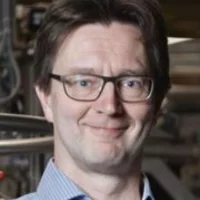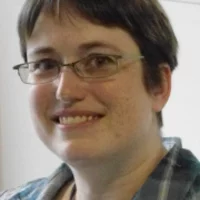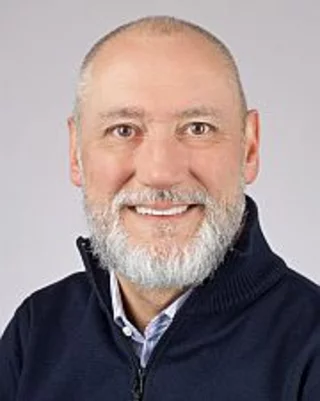Biography
Phil Willmott is titular professor of physics at University of Zürich and Chargé de Cours at EPF Lausanne. He is the SLS 2.0 project leader for photonics and science for the Photon Science Division of the Paul Scherrer Institut. He studied single-honours BSc physics at Newcastle University before embarking on research into novel polymer optical fibres at the Hirst Research Laboratories of GEC in Wembley, London. He then moved to Switzerland where he obtained a diploma in experimental physics and PhD in physical chemistry, before carrying out two postdoctoral posts, first in collaboration with IBM Rüschlikon, and then at the ENEA institute in Frascati, Italy. He then returned to Switzerland to perform research into novel materials and nonthermal thin film growth and obtained his Habilitation in this subject in 2000.
In 2001 Willmott joined the team of the SLS project and developed surface diffraction techniques in combination with in-situ growth methods, most notably pulsed laser deposition. He pioneered the use of area detectors to accelerate and make more reliable surface diffraction data; his group was the first to report on the use of the now ubiquitous Pilatus detector. In 2014 Willmott spent a 12-month sabbatical at the CXI Instrument of the LCLS XFEL at Stanford, California.
Institutional Responsibilities
Project planning of the upgrade of the Swiss Light Source from the perspective of the science, beamlines, and photonics. This involves liaising with all beamline staff, plus the insertion-device and optics groups and interfacing with the machine and logistics aspects of the project.
Scientific Research
Willmott’s scientific research is currently focused on all aspects of synchrotron science and its further development in tandem with technological improvements. In the past, he has been involved in optical fibre technology, plasma-driven chemical vapour deposition, quantum-beat spectroscopy, pulsed laser deposition, surface x-ray diffraction, and related x-ray scattering methods.
Selected Publications
For an extensive overview we kindly refer you to our publication repository DORA.
Structural basis for the conducting interface between LaAlO3 and SrTiO3 Willmott, PR; Pauli, SA; Herger, R; Schleputz, CM; Martoccia, D. Phys. Rev. Lett. 99 155502 (2007)
Graphene on Ru(0001): A 25x25 supercell Martoccia, D; Willmott, PR; Brugger, T; Bjorck, M; Gunther, S; Schlepütz, CM; Cervellino, A; Pauli, SA; Patterson, BD; Marchini, S; Wintterlin, J; Moritz, W; Greber, T. Phys. Rev. Lett. 101 126102 (2008)
Tunable conductivity threshold at polar oxide interfaces Reinle-Schmitt, ML; Cancellieri, C; Li, D; Fontaine, D; Medarde, M; Pomjakushina, E; Schneider, CW; Gariglio, S; Ghosez, P; Triscone, JM; Willmott, PR. Nature Comms. 3 932 (2012)
Books
Introduction to Synchrotron Radiation: techniques and applications (second edition), Philip Willmott, John Wiley & Sons, Chichester, 2019. ISBN: 9781119280392
Introduction to Synchrotron Radiation: techniques and applications (first edition), Philip Willmott, John Wiley & Sons, Chichester, 2011. ISBN: 978-0-470-74578-6


